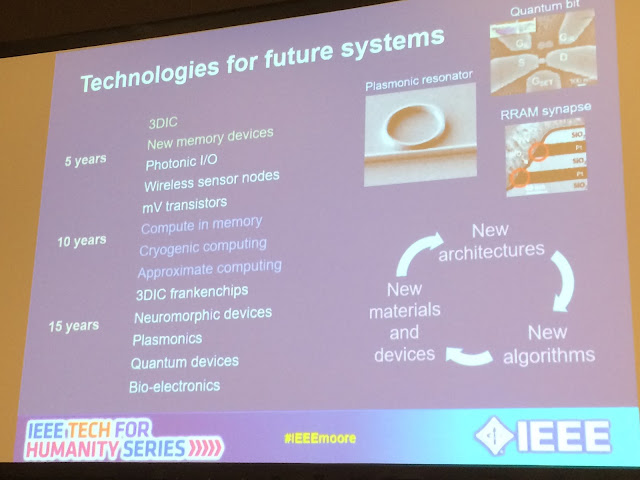Moore’s law says the number of transistors on a square inch of chip doubles every 1-2 years. People take this to mean the speed of computers doubles every year, but really it was stated more as an observation about the economy of making semiconductors. The performance prediction is attributed to a different Intel executive (David House), who predicted chip performance would double every 18 months.
Moore’s law was a good predictor of semiconductor advancement and correlated well to performance. In 1995 transistors were still getting smaller, but the signal distance was increasing, so wire delay started to slow them down. This was compensated with other optimizations that kept Moore’s law relevant. In 2005 power output was leading to greater and greater heat, which led to a limitation of clock speed, and instead of running cycle speeds faster, newer chips just add more cores.
The existing process of shrinking chips is not going to be economical, so the current loop of size reduction will not be sustainable without substantial innovation. To sustain (and move beyond) Moore's law, we probably need some disruption in the industry, which can include things like:
- Cryogenic supercomputing can perform at lower power levels than CMOS (even when accounting for the power required for the extreme cooling) which would allow for higher clock speeds.
- Quantum computing - this is still in the future, and only has limited applications. Currently research is in its great infancy.
Looking forward, the expectations are that innovation being worked on today will be available ~10 years down the line commercially.
What are the characteristics needed from today's semiconductor chips?
- Ability to be always on
- Low power - need much better efficiency (We are looking for orders of magnitude drops in power usage - reducing voltage from 1 Volt to 1 millivolt reduces power consumption by a million. Once we get to that level of power usage, we won't need batteries anymore - chips could work on ambient power in the air.)
- Embedded memory
- Small - to support applications in IoT and wearables
- Networked (optical interconnects)
- Flexible substrait (for wearables)
Technologies for future systems:

No comments:
Post a Comment